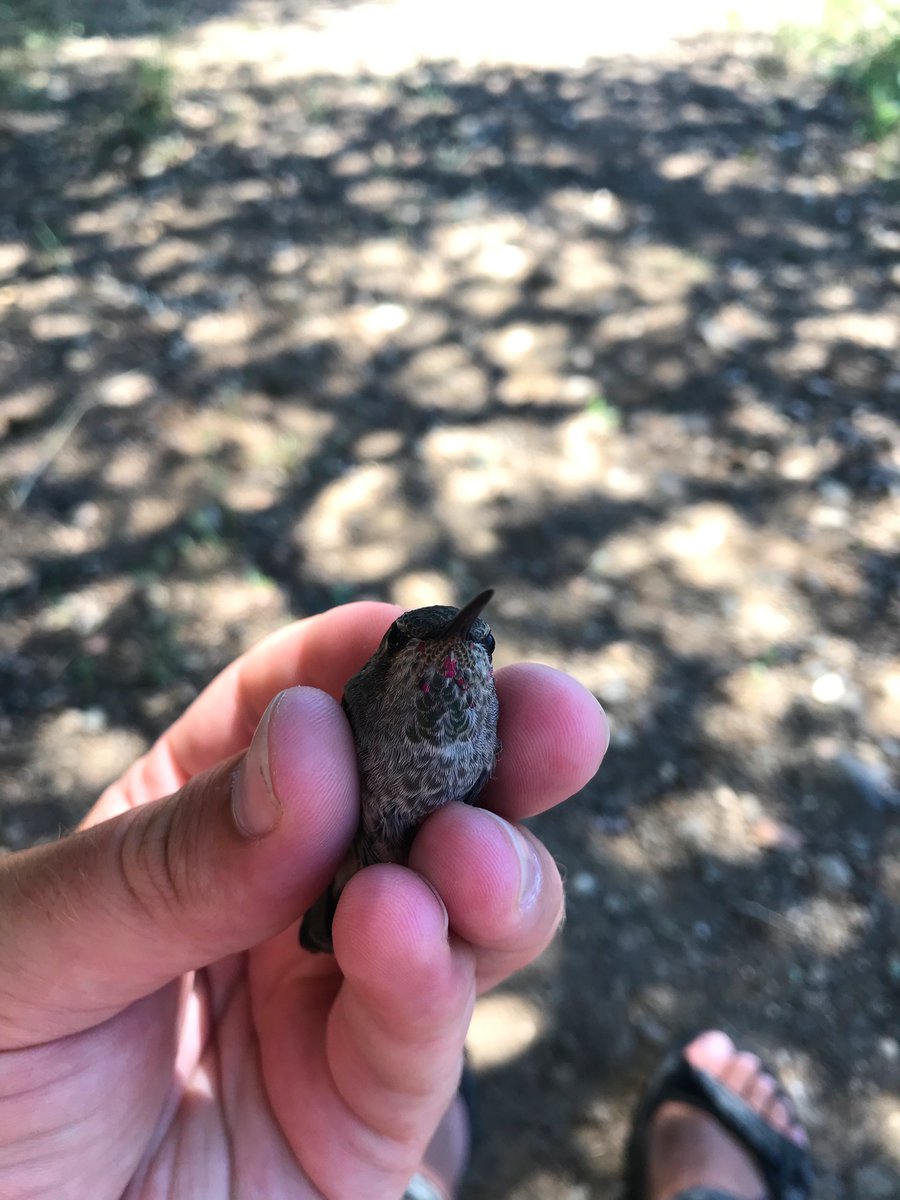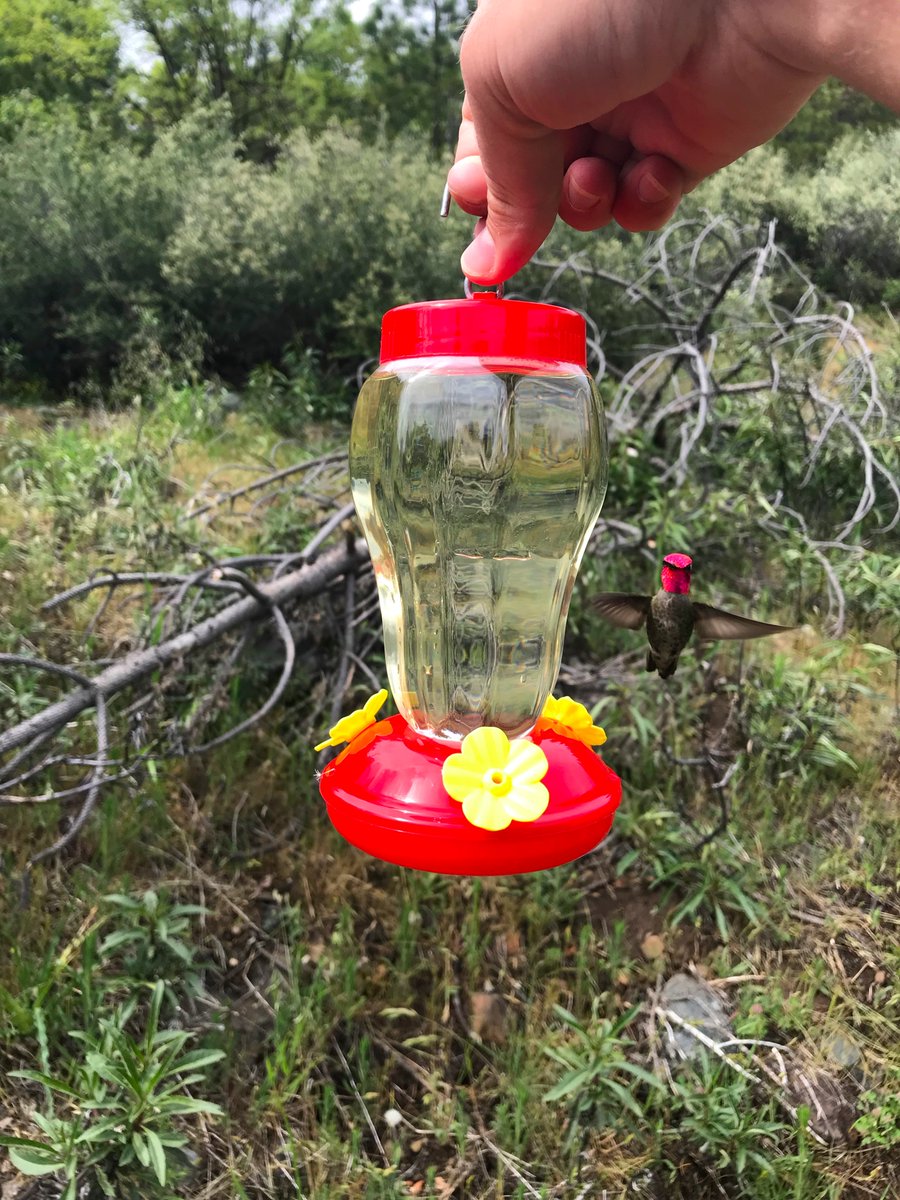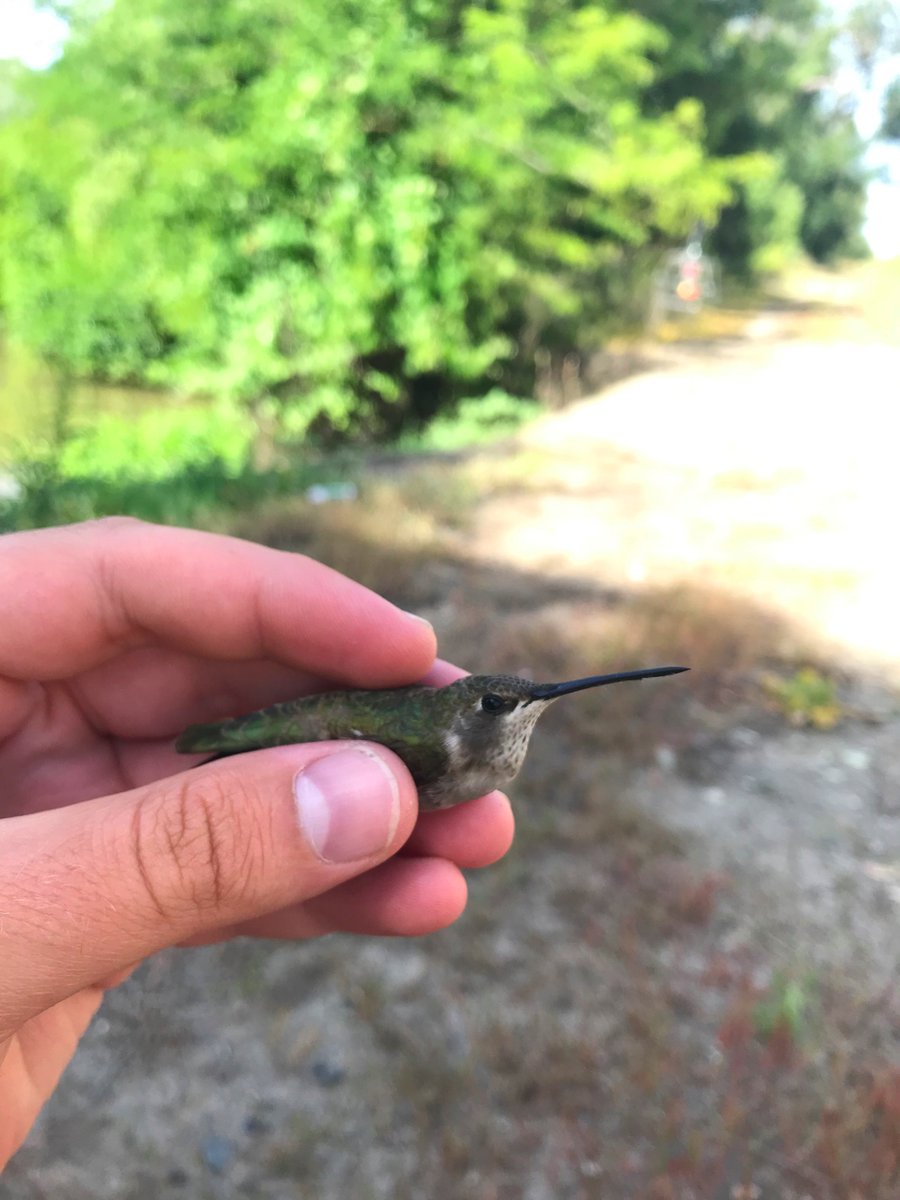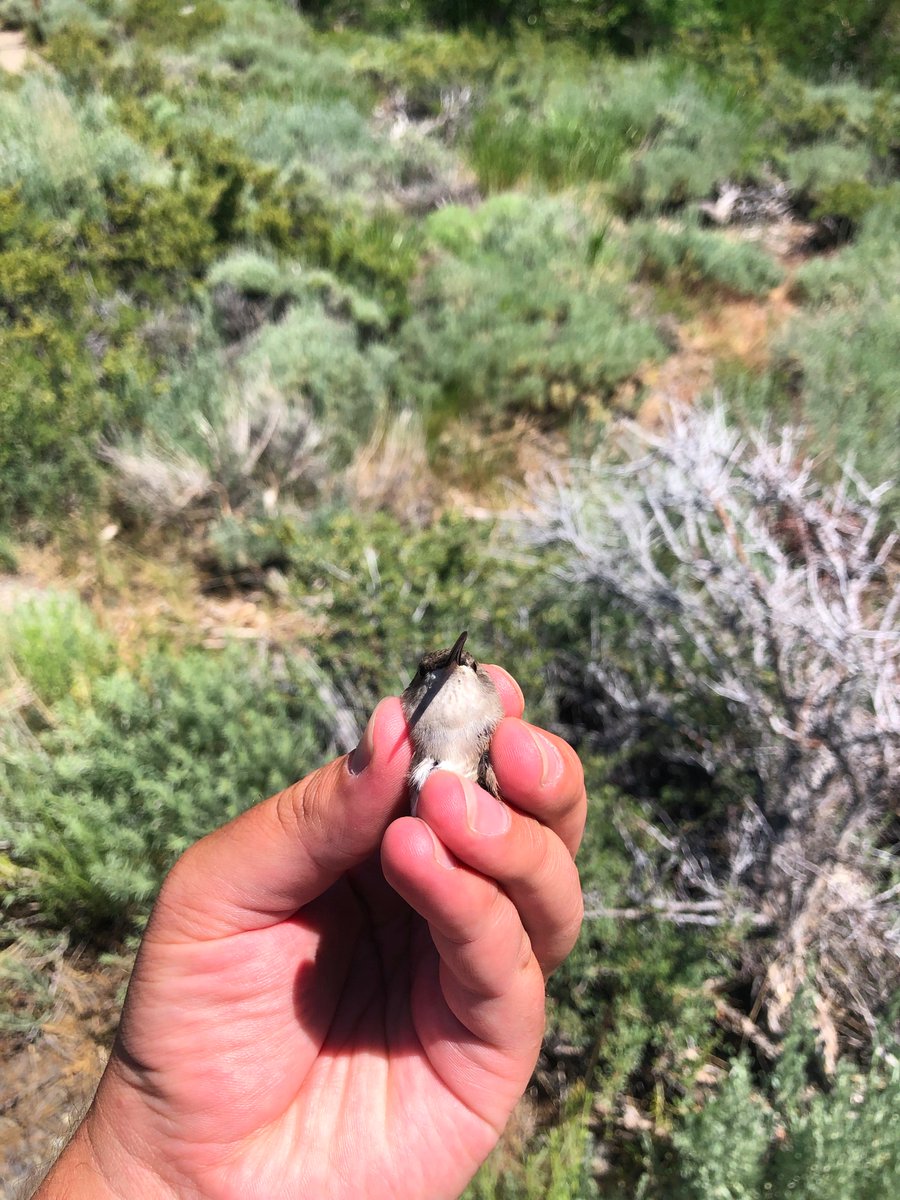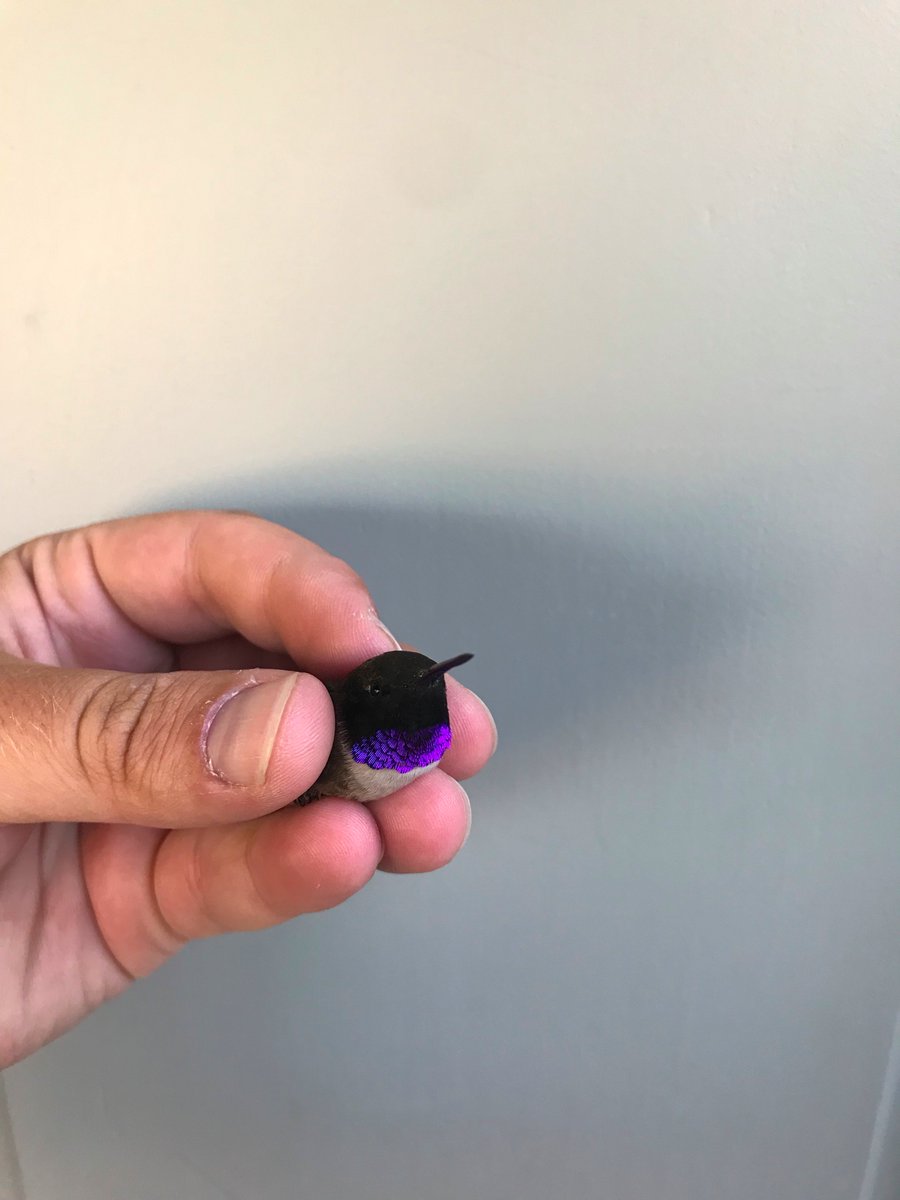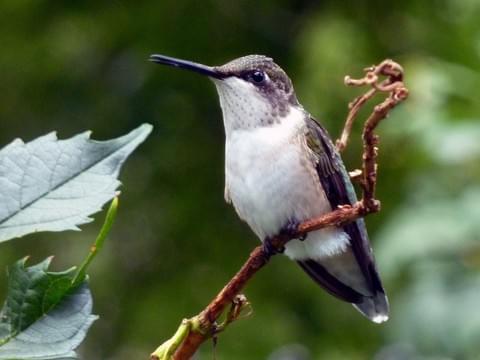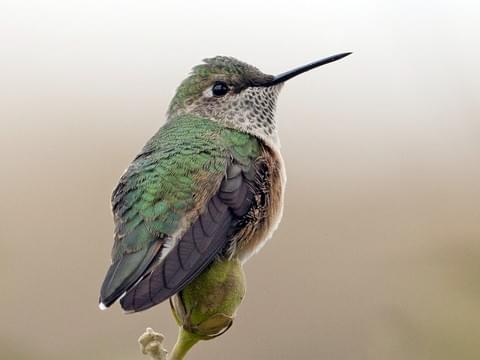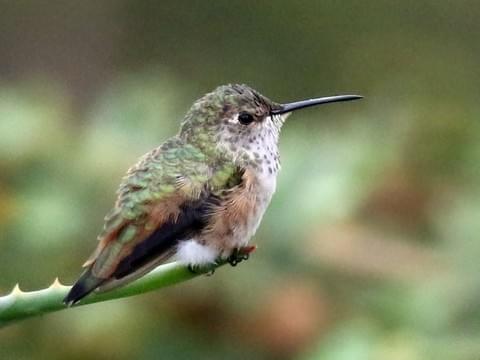Hummingbirds are known for their amazing iridescent gorgets, and it often makes them easy to identify. But what about the females? Female North American #hummingbirds, mostly in the Bee hummingbird clade, can look very similar. So let& #39;s have a female hummer appreciation thread!
Here is an Anna& #39;s hummingbird (Calypte anna) named after a French queen and a HUGE gorget on the male. Calypte actually means hood! For this female - remember that Anna& #39;s are chunkers. Big (for US/Canada hummers) with short bills. And females have a dirty chin with a bit of pink!
Anna& #39;s closest relative is the Costa& #39;s hummer (C. costae). The males also have a hood, but these females have small beaks but this time aren& #39;t chunkers (so smol). Also, a clear white chin!
Female photo: Nick Hajdukovich
Male photo: Gordon Karre
Female photo: Nick Hajdukovich
Male photo: Gordon Karre
Compare Anna& #39;s to the Black-chinned (Archilochus alexandrii). Archilochus was a poet who had energetic poems FYI. Look, these were named awhile ago. Female black-chinned have long-ass beaks and such clean chins. So bright! A little smaller too, but that beak is my go to!
Now to black-chinned& #39;s sister - the (in)famous ruby-throated (Archilochus colubris). Basically anything you buy in the store... These are the eastern version of alexandrii. Clean throats, medium beak. Honestly I& #39;d go off range. This is an EAST COAST ELITE. Photo: Cathy Pondelicek
On to Selasphorus, the smallest in the US and Canada! Selasphorus means light-bringing, and all these males are BRIGHT. Here is rufous and calliope to give you a taste. All these ones are a redish on the side. The key is going to be distinguishing the *amount of red* We got this!
First up: the broad-tailed humbum (S. platycercus). These gals are high elevation specialists. Think Rocky Mountain hummers in UT, CO, AZ, and NM. Note the small beak, reddish sides, white by the eye, and pattern-less spots on the chin. But range is key!
Photo: Brian Sullivan
Photo: Brian Sullivan
Up next - the Calliope hummingbird. S. calliope (originally Stelulla because of the male& #39;s star-like gorget) is named after the leader of the muses in Greek mythology. Another high-elevation bird, she is TINY! 2.5 grams! Spots on neck are in lines too, but size is the indicator.
Lol of course I got her blinking....
This an Allen& #39;s hummingbird (S. sasin). They are extremely west coast - basically if you& #39;re >100 miles inland you& #39;re not seeing it. Allen& #39;s are close to rufous but more green. Small, a slightly rufous on the side, green back. Allen& #39;s/Rufous are on eBird for this reason tho sorry
Allen& #39;s photo cred above: Margaret Viens.
Rufous photo credit below: Ian Routley
Sorry about the space!
Rufous photo credit below: Ian Routley
Sorry about the space!
Finally we have our rufous hummingbird (S. rufus) aka America& #39;s pain in the ass humbum. Despite being ruthless, they fly from Mexico to Alaska every year to breed! Wild! And they are called rufous for a reason - small, orange sides, brick colored back, rufous tinged head.
This thread was inspired by a very cool piece by @KennKaufman I read a few years ago. Give it a read! https://www.audubon.org/news/i-became-better-birder-when-i-stopped-focusing-males">https://www.audubon.org/news/i-be...
The above hummingbirds are what you will encounter if you live north of Texas, New Mexico, and Arizona. I hope this helps and good luck birding out there!
The pictures above with photos in the hand were mine, and I had all federal and state permits to work with these birdos.
The pictures above with photos in the hand were mine, and I had all federal and state permits to work with these birdos.
Please keep your wildlife encounters safe for both you and the animals! Hummingbirds are amazing and we& #39;re lucky to have them, but let& #39;s keep it that way. A few tips:
1. Keep your feeders clean!
2. Don& #39;t waste $ on that red junk - make your own. 1 cup water 1/4 cup sugar:)
1. Keep your feeders clean!
2. Don& #39;t waste $ on that red junk - make your own. 1 cup water 1/4 cup sugar:)
Honestly I get my feeders at the dollar store - cheap and work well! Then just mix the water and sugar and bam you’re done

 Read on Twitter
Read on Twitter
